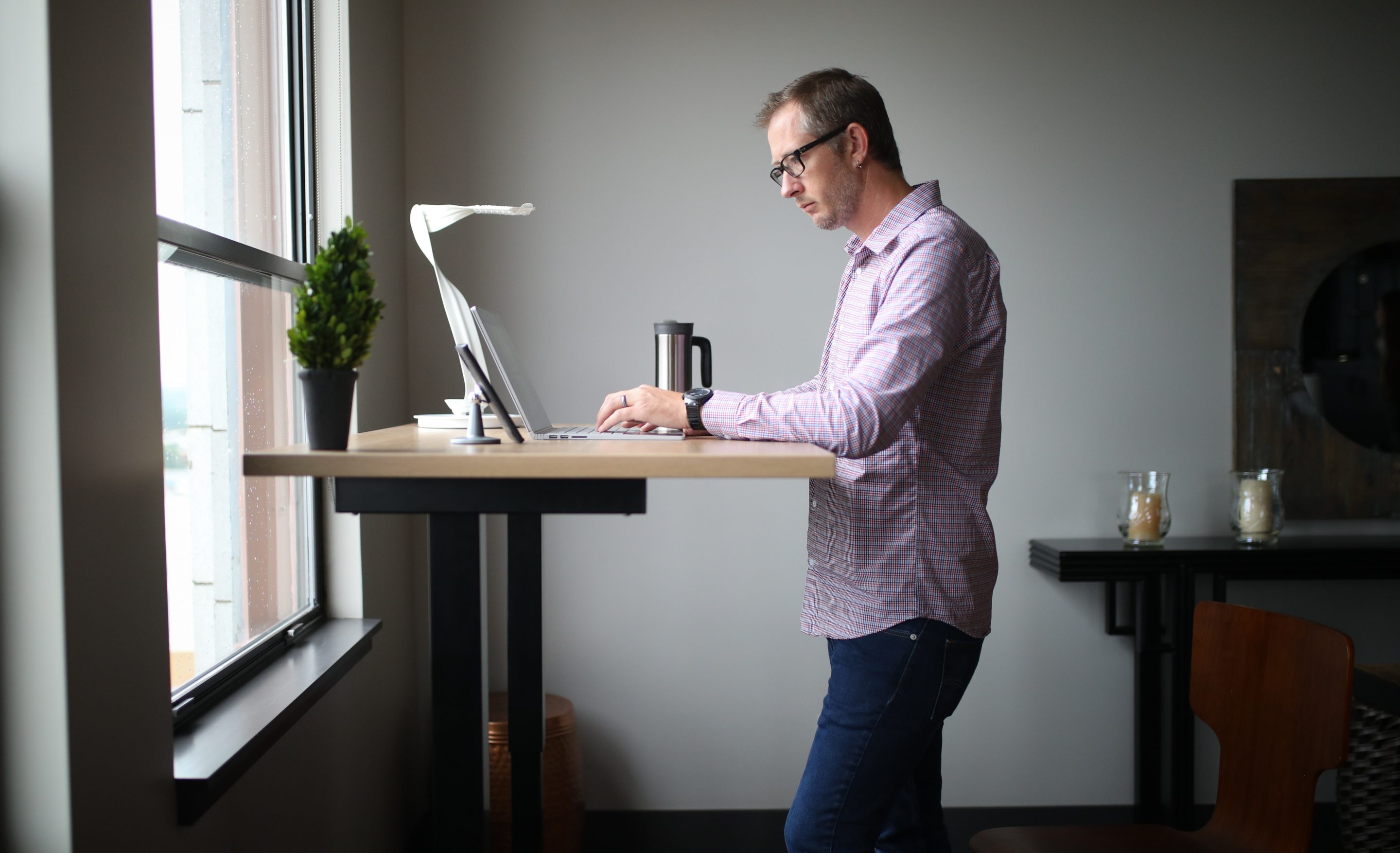When the pandemic moved everyone to their home offices or bedroom closets, employees had to find creative ways to stay on their feet. In many cases, literally. The sales of standing desks soared to new heights, and left the old sitting desk in 2019. But what happened? Why did so many people opt to upgrade to a taller desk, and was it ultimately a better choice? Experts say yes.
What is a standing desk?
There is only one criteria for a standing desk: you have to be able to stand. They come in all shapes, sizes, and adjustability levels, but at the root of it all is that the desk rests at arm level, so people can write and use their computers while standing. Some people make their own standing desks by simply putting their computer at the top of a pile of books, while others can spend over $1,000 on an adjustable sit-to-stand desk.
Are standing desks good for you?
Yes. Scientists have studied the effects of sitting for long periods of time against groups who stand. When both user groups were compared, the sitters were shown to be more likely to develop heart disease, and reported more neck and back pain than people who stand for the same extended hours. Standing avoids the stagnancy of remaining seated, and keeps your body alert and working.
According to WebMD, people who use standing desks burn more calories throughout the workday than those who opt for sitting. Scientists studied caloric output from three groups, sitters, standers, and walkers. They burned 80, 88, and 210 calories per hour, respectively. The best way to stay active during the day is to use a standing desk, but rotate through the three options. Many people use treadmill desks, where a treadmill keeps them walking through meetings and workdays, but for people without that option, a standing day can be amended with brief trips. Walking to the water fountain, to visit a coworker, or for work from home employees, a run to the kitchen or bathroom every hour or so can be enough to keep your body active. From a health perspective, standing desks make the most sense for employees.
How do I stand the right way?
Really, the best way is the way you do it. Any means of standing has health benefits over sitting, but there are ways to optimize and increase the rewards. When you start the transition, taking shifts standing and sitting in 30 minute increments will minimize the shock to your system. People who cut out sitting cold turkey have reported calf and foot pain from the increased attention on the area. Making sure to take breaks from both standing and sitting relieves tensions in both the feet and back areas.
It is also critical to have good footwear. Shoes without arch support or solid structure can take a toll on your health, and lead anywhere from low levels of discomfort to plantar fasciitis, a disconnect in tissue borne of unsupported feet. Standing for extended periods of time can be extremely tiring and even painful if done wrong.
Setting your desk to the right height is the final measure to ensure a comfortable experience. The desk should allow for full standing, and your workspace to be at a 45 degree angle for your elbows.
Is it right for me?
There is no answer that is right for everyone, but if you have experienced discomfort or just want a change of pace, introducing a new kind of desk to your workspace could be the breath of fresh air you have been craving.



